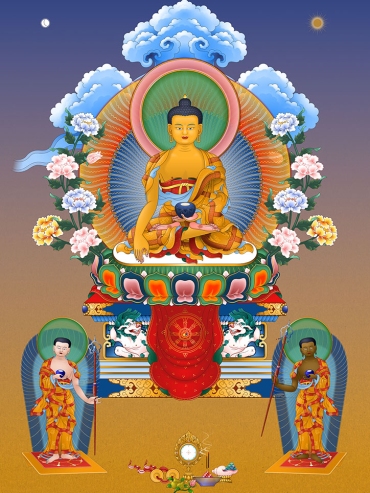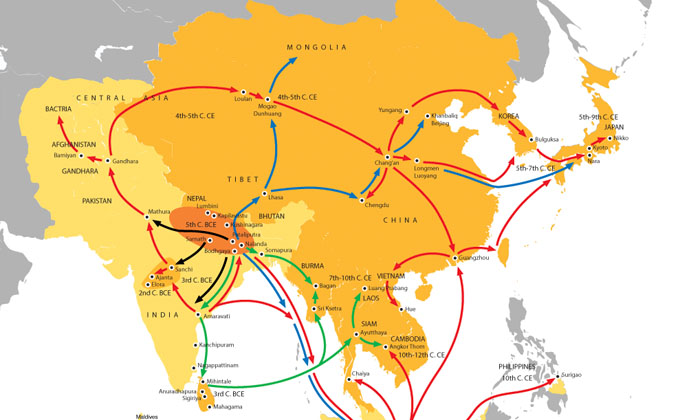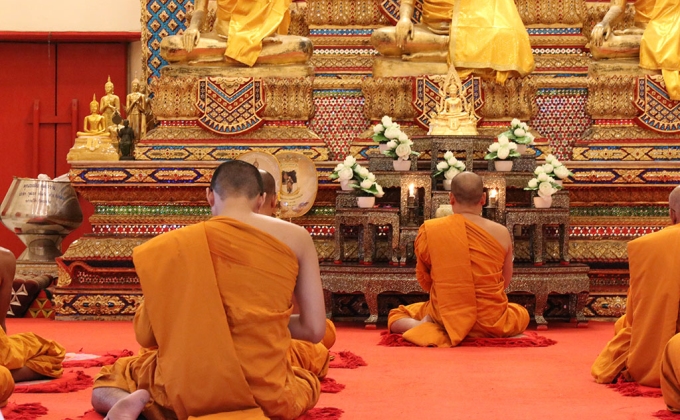Shakyamuni Buddha: Bringer of Buddhism to Our World

Siddhartha Gautama gave up his worldly comforts to gain a deeper understanding of the complexities of life. When he attained supreme enlightenment under the Bodhi tree, he became Buddha Shakyamuni. He devoted the rest of his life to imparting the Buddha Dharma, his profound teachings, to the world and guiding many people on the path to liberation from suffering. His experiences, teachings, and wisdom were not originally divided into different paths. Rather, they reflected a universal wisdom shared with all. Over time, however, as Buddhism spread to different regions and cultures, it developed into the three vehicles: Hinayana, Mahayana, and Vajrayana. These vehicles arose in response to different spiritual aspirations as well as the speed and depth with which practitioners could progress in the Dharma.
Buddhism has branched into numerous sects and schools. An impressive example is Tibetan esoteric Buddhism, which includes twelve major sects, including Nyingma, Kagyu, Sakya, Geluk, and Jonang. Other important aspects of esoteric Buddhism include the teachings of Buddha Shakyamuni contained in the Tripitaka, the Shingon school, and exoteric Buddhism, which includes Zen Buddhism, the Pure Land school, and the Vinaya school, among others.
Dorje Chang Buddha: Origin of All Buddhism

Despite these differences, all paths, schools, and traditions of Buddhism can trace their lineage back to Dorje Chang Buddha. Without Dorje Chang Buddha, also called Vajradhara, there would be no Buddhism, no Buddha Dharma, no Buddhist studies, no Buddhas or Bodhisattvas, and no followers of the Dharma. All that would remain would be the eternal concept of absolute truth, represented by the formless Dharmakaya known as Samantabhadra Tathagata or Adharma Buddha. This Dharmakaya is also called Buddha-nature, which is not Buddhism itself. It abides in perfect tranquility. With the Dharmakaya, there is no subject who can expound the Dharma.
Yet out of this stillness the Dharmakaya initiated the Sambhogakaya Dorje Chang Buddha. This action led to a profound propagation of Buddhist teachings in the Dharmadhatu and the three spheres of existence. Dorje Chang Buddha appeared in our world twice. First as Venerable Vimalakirti (Dorje Chang Buddha II) and then as H.H. Wan Ko Yeshe Norbu (Dorje Chang Buddha III). Regardless of the nature of the Buddha Dharma, it owes its existence to Dorje Chang Buddha, the original leader of all Buddhist sects and schools. In one of his manifestations, Dorje Chang Buddha also appeared as Dipankara, a former Buddha who imparted his teachings to Shakyamuni Buddha, the first Dharma teacher on earth.
Over more than two millennia, different Buddhist schools have intermingled and learned from each other, enriching their teachings and contributing to an extensive network of lineage transmissions within Buddhism. During this long period of time, patriarchs from different lineages have learned from and taught each other, thus enriching the Buddhist traditions.
Image sources
(i): Fred van der Zee, via Digital Thangka
(ii): http://www.fodian.net/world/imagesa.html, Public domain, via Wikimedia Commons
Learn more about Buddhism
Four Phases of Dharma Transmission
Founded in the 6th century by Buddha Shakyamuni in northern India, Buddhism has spread to the present day in four phases, producing different streams of thought and practice.
Main Sects and Schools of Buddhism
Becoming a Buddhist: A Step-by-Step Guide
In order to build a Dharma practice and achieve the goal of Buddhism, the liberation from the cycle of birth and death, certain elements of Buddhist practice must be understood and correctly applied.



